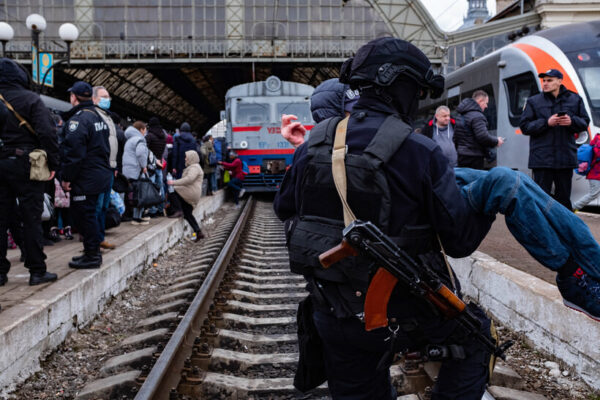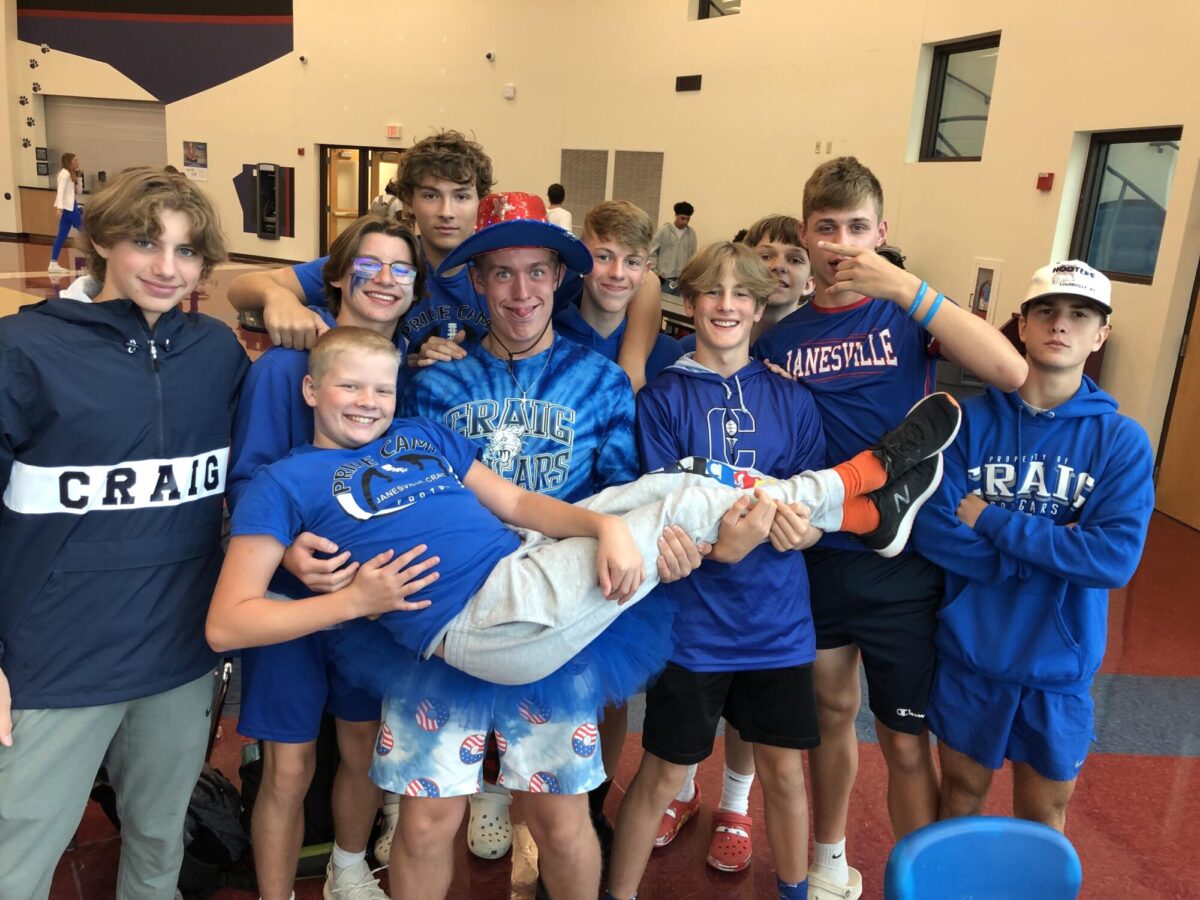On Wednesday, Sep. 27, 2023, Ukrainian photographer Iva Sideash visited Craig’s art department and gave a presentation of photos she had taken during the ongoing Ukrainian-Russian war.
She recently came to America to present her photo collection called “The Wall: Witness to the war in Ukraine.”
Additionally, she had taken a detour to give a presentation about her work and experiences to the students of Craig High School.
Sidash is a resident of Lviv, Ukraine, she described it as, “a city similar to Chicago”. Born in 1995, she started her career in photography in 2019, starting off with various collections – “Street Dialogues” being her first.
Most of her photographs center around individuals and people throughout everyday life.
During the presentation, she stated that this aspect of her art was important because she “likes that she can tell stories of others and spread their voice.”
Her life–and her work–would change on Feb. 24, 2022, when Russia invaded Ukraine, kicking off the still-running conflict.
On the first day, Sidash awoke to air raid sirens and was initially confused as they had never been used in her lifetime.
As she came to understand what had happened, she had to make a choice.
Many other people around her were fleeing to the border, hoping to escape the conflict to neighboring Poland.
Sidash did not flee, however.
Coming to reckon with the new circumstances, she made a decision to carry on with her art. This time, however, she focused her coverage on the upcoming storm of war.
The first picture she presented was one of the first pictures she had taken during the war.
It was on one of the Lviv train terminals where people were crowding to escape the city. At this point the city was under Russian shelling.
People were sleeping on the floor of the terminal, waiting for trains to take them to the border.
In the photograph, she pointed out two figures in the center of the frame.
It was a soldier carrying an elderly disabled man across the tracks.
This specific image struck her.
“This war is not only about attacks, but about humanity, how Ukrainians can overcome it, together,” she said.
That sentiment only furthered her resolve to live her new role as a war photographer.

The following day, Sidash traveled with refugees to the Polish border where she shot her next set of photos.
The photos portrayed groups of refugees, mostly the elderly, women, and young children.
Sidash noted that this was her first time dealing with “such vulnerable people.”
The situations of these people were a far cry from her original focus on everyday street life.
“I just wanted to hug them, to help them,” she said, but “then I realized that I can help them by photographing them.”
That was precisely what she did.
Over the next few days, Sidash continued to photograph at the Polish border before realizing that to get the full story, she needed to go to the front line.
On her travels there, she had noted that this was the first time she had worked without assignment.
“I remember when I was there for the first time, I didn’t have an assignment as I usually work for media on assignments, I realized that I now I was doing this myself,” she said.
This became her personal mission.
Her next series, and the next slides on her presentation, focused on the people trapped within the radius of Russian artillery.
The pictures were of people trapped in basements, in subways, and any other subterranean shelters they could find.
Throughout this process, Sidash had to adapt to the situation.
Before the war, most people were happy, if not indifferent, to their photograph being taken.
Now, many wished to not be photographed in such desperate conditions so as not to hurt their national pride.
Although, Sidash still managed to snag a number of photos for her collections.
She explained to them that she wanted to “Tell people abroad our stories.”
That alone was a good enough reason for many.
Sadish was grateful that, “they trusted me enough for me to do that,” she said.
Her latest project, and one with a noticeable degree of hope, saw her travel through territory gained by Ukranine’s counter-attacks last year.
It was around this time that Sidash decided to switch from clear, sharper, digital photography, to film, specifically expired film.
Expired film is notoriously unpredictable and hard to shoot with.
It produces off colors, a plethora of visual noise, and ‘burned edges’ at the film.

This was the feeling Sidash stated she wanted to capture.
She explained that she switched to expired film as photography, at its core, is all about capturing emotions.
The burned-out, strange, and “magical” quality of the film captured the whirlwind of emotions felt collectively by the people of Ukraine.
It helped capture the story, the emotions of it, “what is behind these burning buildings and cars, what are they silent about.”
With her newfound style, she traveled through villages that were recently liberated. She took photos of the damage and of the people left behind.
According to Sadish, the newly liberated people spoke of brutality under Russian occupation, from extrajudicial killings to forced cultural assimilation.
She took the photos of these people and had them write a short message, in the form of a postcard.
Among all of these stories, Sidash noted one particular story.
Her small group was traveling through a village that had recently been liberated. Her group was passing out water and whatever they could spare, as they did throughout the villages receiving humanitarian aid.
While there was not enough, locals informed Sidash and her group of an old woman who lived alone on the outskirts, yet to receive any of the aid.
They would visit her anyway to make sure she was okay.
When they arrived, she was alright and her group was going to apologize that they had nothing to give her.
To the group’s shock, the old woman began to apologize and said, “I am so sorry I have nothing to give you. I have chickens, I have eggs,”
Sidash was moved by this stranger’s act of kindness.
She said, “with no windows, without nothing, she was trying to give us something. That stuck with me. This is a story about humanity. To show how people are united, and how people help each other.”
While the war still rages today, Sidash took this presentation opportunity to give Craig students a glimpse into a real and relevant event.
It is easy for Americans to act as a disinterested 3rd party, but much harder to acknowledge that these tragedies are still occurring at this moment in our world.
If there was a common thread throughout Sidash’s presentation, it was the subtle reminder that everyone has the opportunity to show humanity, make a difference, even with just a camera.









